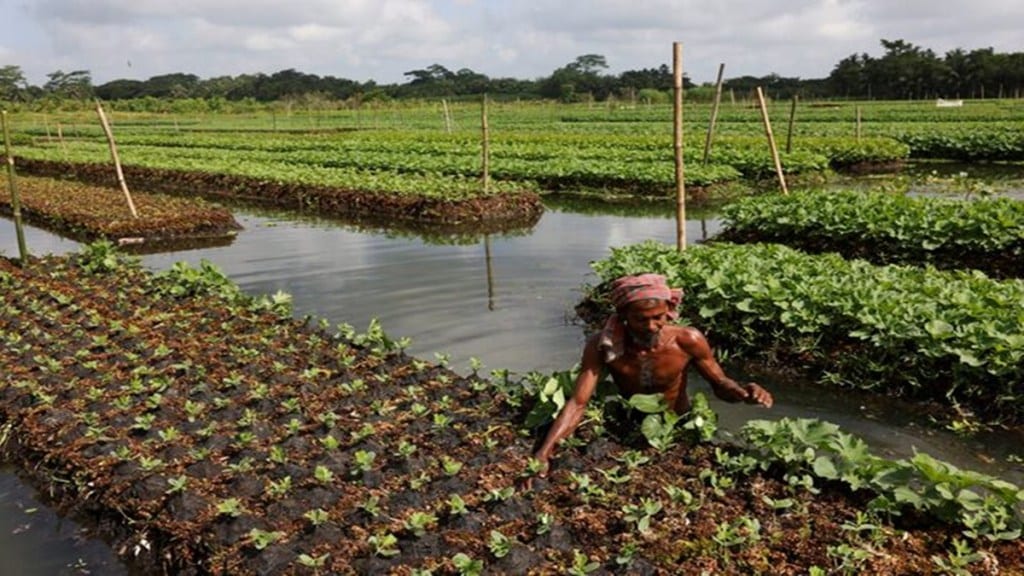By N Chandra Mohan
Farmer unions are restive over the trade deals being negotiated by the National Democratic Alliance (NDA) government and seek consultations before they are inked. Their opposition is not just to the current deals being negotiated, but all the major deals that have been signed in the past, like the ones with Sri Lanka and the Association of Southeast Asian Nations (ASEAN)—they led to the dumping of cheap commercial crops like tea, coffee, pepper, and rubber that adversely impacted farmer incomes. The dairy industry’s apprehensions regarding stiff competition in milk and milk products from Australia and New Zealand were responsible for India walking out of the Regional Comprehensive Economic Partnership (RCEP) at the eleventh hour.
For such reasons, India’s trading stance has been defensive, and it has not seized the emerging opportunities. Farmer unions are concerned about the relentless pressure from the US to open up the country’s agricultural sector. It is a very big red line for the government, as it scrambles to ink an interim deal with the US for averting the threat of reciprocal tariffs. The worry is that it may capitulate to American demands. As the ongoing talks enter the final stretch, this is indeed a sensitive issue—especially the US’ demand for lower duties on genetically modified (GM) maize and soybean which are not allowed under Indian regulations. On this, progress has hit a roadblock.
Farmer unions are apprehensive that allowing greater market access for US soybean, for instance, could adversely impact small and marginal farmers. Around 6 million farmers who cultivate this crop will be affected with soybean prices of US origin, currently ruling around $390 per tonne as against our minimum support prices of $620 a tonne, according to an article in the Financial Express. Cheaper imports at lower tariffs will thus affect domestic cultivation. This is why the red line for the government is not to expose the country’s agricultural sector to imports from large US farms whose size averages 466 acres, as compared to less than 2.7 acres for our small and marginal farmers.
The question naturally is whether India can ink any free trade agreement (FTA) or interim deal without agriculture being on the table. It is mostly unlikely, as our most favoured nation tariffs on agricultural goods is 39.6%—which is eight times higher than what the US charges—and the US secretary of commerce, Howard Lutnick, has clearly indicated that India’s tariffs must come down and that flexible strategies, including setting quotas, could be adopted to address sensitivities. Experts like Ashok Gulati argue that the sector is not as vulnerable as popularly believed, as 80% of India’s agriculture is reasonably competitive. On sensitive items like wheat and dairy items like skimmed milk powder, India could negotiate tariff rate quotas to provide greater access for US produce.
Any trade negotiation entails a process of give and take for greater access to each other’s market. Freer trade in farm and dairy produce is no exception, although it is a no-brainer that the interests of small and marginal farmers must be protected. But what is it that we can export to the US in return for allowing more access to our market? Gulati suggests that we must push the US on preferential market access for high-value horticultural products such as bananas, mangoes, grapes, and pomegranates, which have long faced regulatory hurdles in the US. In return, we can lower duties on walnuts, apples, cranberries, and blueberries, which we do not produce or do so in limited quantities.
Being a demandeur in negotiations suggests a different construction to opening up India’s agricultural sector than reflexively defending it at all costs. The sector has shown resilience and is an important part of the country’s growth story. Agriculture registered growth of 4.6% in FY25, with a decadal expansion of a similar magnitude. Official expectations are that a 5% growth is feasible and vital for India becoming a developed nation by 2047. Union agriculture minister Shivraj Chouhan has stated that as the nation aspires to become a $5 trillion economy, agriculture must contribute $1 trillion, up from the current levels of $637 billion.
Faster agricultural growth, in turn, has been associated with a rising share of the non-crop sectors like livestock (with milk production remaining dominant), fishing, and aquaculture in the overall gross value output for agriculture and allied activities. Although the share of the crop sector has declined, it still remains the largest contributor—comprising cereals, pulses, oilseeds, other field crops, and horticulture. The former are grown in 92% of gross cropped area and by a vast majority of farmers in the countryside. High-value horticultural crops like fruits and vegetables (and spices) have rapidly gained ground and are as important as cereals in the crop sector’s output.
Consulting with farmer unions and getting them on board is a recipe for successful trade negotiations as opposed to presenting the deals to them as a fait accompli. Farmer unions have vowed to put up a united front against the deals being currently negotiated as they fear that their interests may be hurt if the red line does not hold.
The writer is an economics and business commentator based in New Delhi.
Disclaimer: Views expressed are personal and do not reflect the official position or policy of FinancialExpress.com. Reproducing this content without permission is prohibited.

